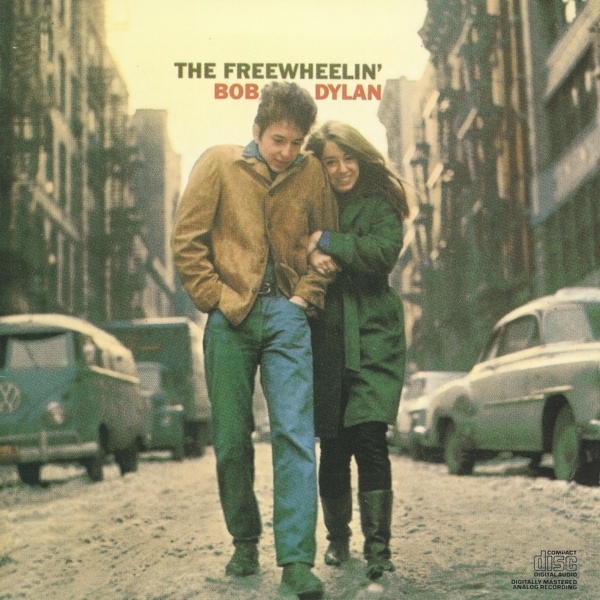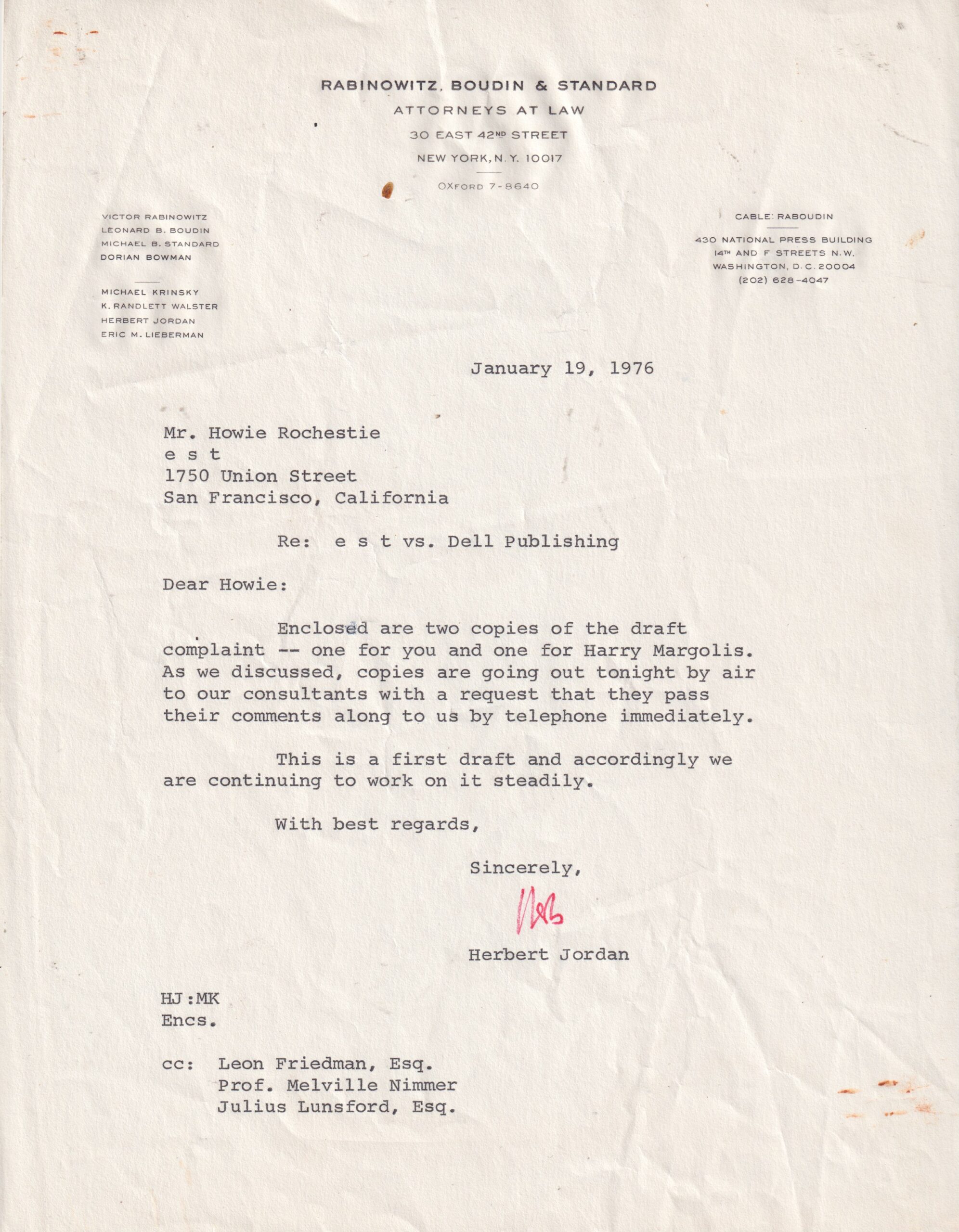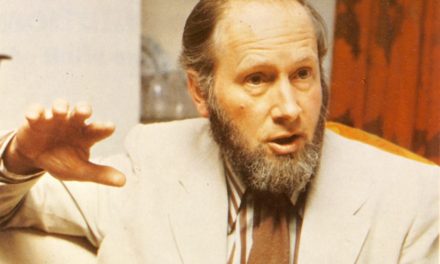In “The Philosophy of Modern Song,” handsomely printed in the USA and just published by Simon & Schuster, Dylan describes and comments on 66 songs and the artists who made them. You might think the title sounds pretentious, but it’s not. He’s a serious musicologist and Academe better make room for him. Also, he’s a critic with a unique style. The 66 chapters provide facts about the singers and the making of the records, but above all, Dylan explains how the song hits you –or at least how it hits him. He rambles along to sudden, logical conclusions. His perspective is the opposite of coy. Even if you don’t know the songs, or can barely remember having heard them once or twice, the relevant background this book provides is fascinating in and of itself. And thought-provoking.
There are way too many great riffs to quote in this brief review. Here’s one: writing about Johnie Taylor’s song “Cheaper to Keep Her” (originally released on the album Tailored in Silk, Stax, 1973) Dylan asks: “How could it not be? Divorce is a ten- billion-dollar-a-year industry… If you’re lucky enough to get into this racket, you can make a fortune manipulating the laws and helping destroy relationships between people who at one point or another swore undying love to one another… Marriage and divorce are currently played out in the courtrooms and on the tongues of gossips; the very nature of the institution has become warped and distorted, a gotcha game of vitriol and betrayal. How many divorce lawyers are parties to this betrayal between two supposedly civilized people? The honest answer is all of them.”
Many of Dylan’s riffs about our society read, in tone and content like Bruce Anderson’s “Off the Record” items in the Anderson Valley Advertiser… And here’s a chapter that couldn’t be included in the “Philosophy of Modern Song” because Dylan didn’t write it:
“As I Went Out One Morning” (released on the album John Wesley Harding, Columbia, 1967). A folkish ballad in a minor key, this song is doubly sad because it comes at you on two levels, the literal and the figurative. It’s a song about personal and political rejection. And there’s a twist: it’s the rejector who feels miserable, not the rejected. The only emotion she shows is determination. He needs to extricate himself but she keeps holding on.
Earlier in the year the Beatles had released Sergeant Pepper’s Lonely Hearts Club Band, with a striking collage by Michael Cooper on the album cover. The Rolling Stones tried to trump it with a hologram on their elaborately orchestrated Satanic Majesties Request. John Wesley Harding come out in December with a seemingly simple jacket, a black-and-white photo of Dylan and three men standing in the woods looking straight at the camera. Keen-eyed fans soon noticed that indented into the hat worn by the peaceful looking man at the left in the photo was someone pointing a gun with a long white barrel. And was that a tiny naked woman leaning into a bend in the tree trunk?
In December 1963 the Emergency Civil Liberties Committee had given Dylan its Tom Paine award “in recognition of distinguished service in the fight for civil liberty.” As ECLC Director Corliss Lamont explained in a letter to the membership, “Bob Dylan has become the idol of the progressive youngsters of today, regardless of their political factions. He is speaking to them in terms of protest that they understand and applaud. The ECLC feels that it is urgent to recognize the protest of youth today and to help make it understood by the older generation.” Lamont attached a a rave review from the New York Times as documentation that Dylan was hip.

The ECLC was made up of lawyers politically to the left of the American Civil Liberties Union (which had been reluctant to defend Communist Party leaders). Dylan felt totally of place at the fancy dinner in a midtown hotel ballroom. He was supposed to give an acceptance speech to 1,400 well-dressed “progressives.” He sensed phoniness and corruption in the recirculated air. He desperately wanted to split but couldn’t, they were giving him an award. To overcome his inhibitions he drank too much. Then he told the crowd that they were old and classy and politically impotent. They booed him. He said “You can boo but… I’ve just got to tell you, man, the Bill of Rights is free speech.” He said he would accept the award on behalf of James Forman of the Student Non-Violent Coordinating Committee and Phil Luce and other Americans defying the US ban on travel to Cuba (both clients of Leonard Boudin and Victor Rabinowitz, alpha males of the ECLC).
Dylan had come to New York in ’61 to pay homage to Woody Guthrie and immediately, automatically started moving in lefty circles. In the Greenwich Village folk-music scene he was breathing the air around Tom Paine in more ways than one. For sure he walked down Grove Street and read the plaque on the building that said

There was revolution in the air around Tom Paine and it made you hallucinate. You heard chimes of freedom flashing, you had visions of equality and disarmament and social justice and maybe even free love. You went to sing for SNCC in Mississippi and a brown-skinned civil rights worker told you she was better than no one and no one was better than her. There you were, embracing the causes Woody had fought for, embracing the movement itself. You offered her your hand –you were seriously interested, you wanted to check her out, get to know her– but she took hold of your arm and would not let go. She insisted on possessing you. You were brilliant and charismatic and could command people’s attention. You had been recognized as a very valuable asset.
Suze Rotolo seemed to personify the movement at its best. She was artistic, gentle, beautiful, intelligent, the most erotic thing you’d ever seen. Her sister Carla disapproved of you because she knew you’d never be a Communist (with a capital C) and that you would always want other women. She must have thought she was protecting her little sister. People always have the fanciest reasons for what they do.
Suze must have winced when she first heard “As I Went Out One Morning” because on the Freewheelin’ album she’s holding you tightly by the arm, walking down the middle of Jones St. (a stone’s throw from Tom Paine’s old pad at 59 Grove). As the chilly afternoon wore on she became a little cynical about the amount of time, money and effort Columbia Records was investing to get the perfect shot. It was her first exposure to corporate excess. You did all the retakes without griping and she was impressed by the level of self-discipline, ambition, and practicality you showed.

In the last verse of “As I went out one morning” the sadness lifts a little. Tom Paine himself –a real revolutionary, not some fake-left lawyer– appears and commands the lovely girl to yield. Then he tells Dylan he’s sorry for what she’s done.
This song is about rejecting the fake left while still yearning for common sense, the age of reason and the rights of man. It’s as sad as sad can be.
The Cult Leaders’ Nemesis
You can probably name at least a half dozen cult leaders and famous gurus, but how many of the investigators who defrocked them ever get credited? Paul Morantz died Oct 23 in Los Angeles and his remarkable life’s work was acknowledged in a NY Times obit by Clay Risen. Morantz was the relentless critic of Synanon who Chuck Dederich tried to murder by having his henchmen put a rattlesnake in Morantz’s mailbox.)
As recounted by Risen, Synanon began “as a last-chance drug rehabilitation program in the late 1950s but had, by the early ’70s, become an insular, oppressive organization.” In 1977 Morantz, a 33-year old journalist with a law degree, received a call from a man whose wife had joined Synanon in Santa Monica and then was “whisked away to one of the group’s communities in the Bay Area. They shaved her head and refused to let her leave… Mr. Morantz negotiated Mrs. Winn’s release, then sued Synanon on the couple’s behalf. He won a $300,000 judgment…
“On Oct. 10, 1978, he met with police officers to discuss next steps against Synanon.” He then drove home, and “as he walked in the door, he reached his left hand into his mailbox. As he did, he noticed a dark, lumpy shape. He didn’t have time to pull back before the object, a four-and-a-half-foot diamondback rattlesnake, bit him on his wrist.
“He screamed for help. Neighbors came running. One applied a tourniquet. Another brought ice. A third called 911. Mr. Morantz remained in the hospital for six days. Doctors said he was lucky to survive…
“The judge, calling the attack on Mr. Morantz an ‘aberration,’ went easy on the two assailants, owing, he said, to the group’s history of helping addicts. Each was sentenced to a year in prison, while Mr. Dederich received five years’ probation.
“By then Mr. Morantz had taken on other cases. He learned that the self-help guru Werner Erhard, the founder of Erhard Seminars Training, or EST, was lobbying a small California town to let him ‘train’ its employees. Mr. Morantz intervened and turned the town against him.”
“In 1978, he tried unsuccessfully to win the release of a client’s son from the People’s Temple, whose leader, Jim Jones, later led several hundred of his followers in a mass suicide in Guyana…”
“All the while he continued his fight against Synanon. Working with the federal authorities in the 1980s, he managed to get its tax-exempt status revoked, essentially shuttering the organization.”
It was gratifying to see Werner Erhard’s scam listed among such infamous rackets –and in capital letters, not their preferred lower-case presentation. A key component of EST’s ambitious business plan was to sell their “training” to corporations and government agencies. They had begun giving “training” sessions to Los Angeles Police Department officers when Morantz exposed the relationship
Erhard’s message was that you can be a “winner” in this society, it’s all a matter of motivation and marketing. The thousands of unpaid est volunteers making recruiting calls with a script in the form of a flowchart (showing how to respond if the person says “I’m in the middle of cooking dinner…”) were pioneers in telemarketing, the employment today of six million Americans. Quotas were imposed on the sales force and relentless pressure was exerted to make sure they were met.
Erhard provided a model for sales managers everywhere. His staff was motivated to produce “results” (i.e., revenues from new recruits and enlistments into the “graduate” programs) by methods ranging from coercion to romance. Unpaid labor was extracted to the max; est employed 100 volunteers for every one paid staff member. Vague, pseudo-political goals were invoked in the pursuit of private power and profit. EST staffers were expected to serve Werner as if he were a king (he was compulsively fastidious). The underlings were instructed to refer to him as “Source.”
Everything about the man, from his Wilkes Bashford leisure suits to his Vitalis-dry-look hair, personified the cultural rollback we were living through, the repressive, counter-political mood of the 1970s. It’s easy to make fun of Erhard’s jargon, but the jargon had a subtext, and the subtext had a specific political content. It was all about marketing, striving, making it, dressing for success, obedience to the higher-ups, seeking private solutions, and serving. Serve your trainer and Werner within EST, your supervisor and employer in the outside world.
In this period I provided Morantz with some info about EST that I had uncovered while working for a San Francisco detective agency. The racket had been controlled not by Erhard but by a leftwing tax attorney named Harry Margolis! (Some details provided in this piece).
When EST wanted to block Dell Publishers from bringing out a book summarizing the EST “training” (because it might cut into sales of a book by Werner), the law firm that suppressed publication was Boudin & Rabinowitz, the leading lights of the civil liberties bar! I knew that they were sexual predators (Marcia Farrell called Leonard “the scourge of the typing pool”), but I had no idea they would ever work for Werner Erhard. There’s corruption and then there’s corruption.





